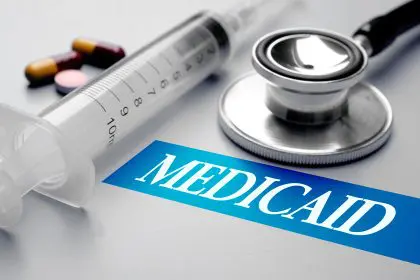The crystalline substance sitting innocently on dinner tables across America might be secretly undermining your health. While salt remains essential for life itself, medical research reveals a delicate balance between necessity and risk, particularly when it comes to your kidneys.
The kidney connection
Your kidneys perform an intricate daily dance with salt, filtering roughly 150 quarts of blood every 24 hours. This remarkable feat depends heavily on maintaining precise sodium levels in your bloodstream. When this balance tips, the consequences can be severe and long-lasting.
Understanding your body’s salt needs
Medical experts have pinpointed exactly how much salt your body requires for optimal function. The difference between healthy intake and excess often comes down to mere grams, yet these small measurements can have enormous implications for your health.
Why your kidneys cry out for help
Every extra shake of salt forces your kidneys to work harder. This increased workload doesn’t just tire these vital organs – it can lead to permanent damage over time. Understanding this relationship becomes crucial for long-term health maintenance.
The daily numbers that matter
Medical research establishes clear guidelines: adults should consume less than 5 grams (about one teaspoon) of salt daily. Yet the average American consumes nearly twice that amount, putting immense pressure on their kidneys without realizing it.
Hidden sources in your kitchen
The salt shaker on your table accounts for surprisingly little of your daily intake. Instead, processed foods emerge as the silent culprits:
A single slice of store-bought bread contains approximately 200mg of sodium. One cup of breakfast cereal can pack 300mg. A sandwich from your favorite deli might contain more than 1,000mg. Even sweet treats like cookies and cakes harbor unexpected amounts of sodium.
Reading labels like a detective
Understanding food labels becomes crucial for kidney health. Manufacturers often list sodium content differently, making it challenging to track your intake. Some products show sodium per serving, while others list it per 100 grams. Learning to decode these differences helps you make informed choices.
The restaurant challenge
Dining out presents particular challenges for those monitoring their salt intake. Restaurant meals often contain more sodium than their home-cooked counterparts, with some dishes exceeding the recommended daily limit in a single serving.
Your body’s warning signs
Excessive salt intake triggers several warning signals:
Persistent thirst that seems unquenchable. Swelling in your hands and feet, especially after eating salty foods. Frequent headaches that might indicate rising blood pressure. Unusual fatigue as your kidneys work overtime to process excess sodium.
The blood pressure connection
High blood pressure and kidney disease create a dangerous cycle. Excess salt raises blood pressure, which damages kidney tissue. Damaged kidneys then struggle to regulate blood pressure, creating a spiral of declining health.
Special considerations for risk groups
Certain populations need to be especially vigilant about salt intake. People over 50 face increased sensitivity to salt’s effects. Those with family histories of kidney disease require extra caution. Diabetics must carefully monitor both sugar and salt intake. African Americans show higher sensitivity to salt’s blood pressure effects.
Practical steps for reducing salt
Making sustainable changes to your salt intake requires strategy. Start by tracking your current consumption for a week. Gradually reduce salt in cooking to allow your taste buds to adjust. Experiment with herbs and spices as salt alternatives. Choose fresh ingredients over processed foods whenever possible.
The flavor alternative
Reducing salt doesn’t mean sacrificing flavor. Consider these alternatives – Fresh herbs add depth without sodium. Citrus juices brighten dishes naturally. Garlic and onion provide savory notes. Vinegars offer tang and complexity.
Shopping strategies
Smart shopping helps control salt intake. Choose fresh produce over canned options. Look for “low sodium” or “no salt added” labels. Compare brands – sodium content can vary significantly. Shop the perimeter of the grocery store where fresh foods typically reside.
Cooking techniques that help
Certain cooking methods naturally enhance flavor without salt. Roasting vegetables concentrates their natural sweetness. Grilling meat develops complex flavors through caramelization. Steaming preserves nutrients and natural tastes. Marinating adds flavor without excessive sodium.
The exercise connection
Regular physical activity helps your body process sodium more efficiently. Sweating releases excess sodium naturally. Exercise helps maintain healthy blood pressure. Activity supports overall kidney function. Regular movement promotes better circulation.
Understanding salt cravings
Salt cravings often signal underlying issues. Dehydration can manifest as salt cravings. Mineral deficiencies might trigger salt seeking behavior. Stress sometimes leads to increased salt consumption. Lack of sleep may affect salt sensitivity.
The long-term outlook
Maintaining healthy salt intake provides lasting benefits. Reduced risk of kidney disease development. Better blood pressure control over time. Improved overall cardiovascular health. Enhanced fluid balance in the body.
Making sustainable changes
Successful salt reduction requires a sustainable approach. Set realistic goals for gradual reduction. Monitor progress without obsessing over numbers. Celebrate small victories in changing habits. Build a support system for dietary changes.
When to seek medical advice
Certain situations warrant professional consultation. Unexplained swelling or water retention. Persistent high blood pressure despite salt reduction. Family history of kidney disease. Difficulty maintaining proper hydration.
Looking to the future
Research continues to reveal new connections between salt intake and kidney health. Staying informed about these developments helps you make better decisions for your long-term health.
The bottom line
Understanding and managing your salt intake represents a crucial step in protecting your kidney health. While the changes might seem challenging initially, the benefits far outweigh the temporary adjustment period. By making informed choices about salt consumption, you invest in your long-term health and well-being.
Remember, these changes don’t require perfection – even small reductions in salt intake can yield significant health benefits over time. Start with manageable adjustments and build upon your successes as you work toward optimal kidney health.















